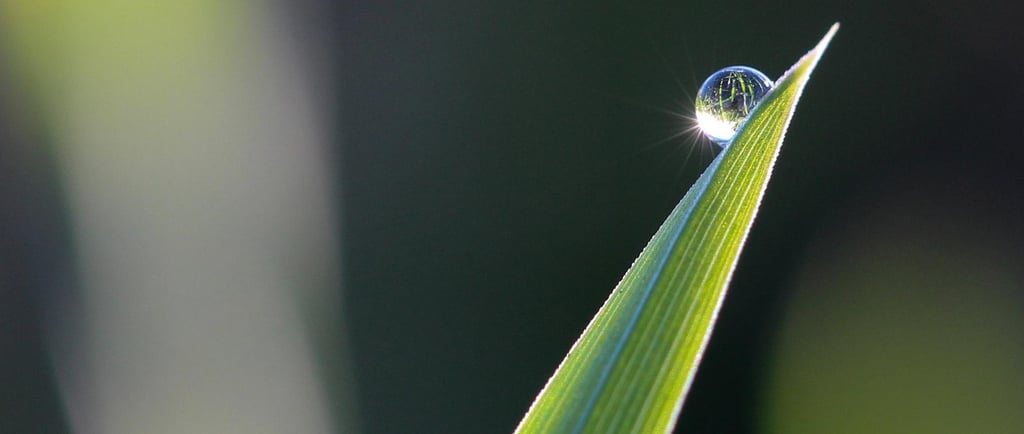💧 The Earth’s Great Traveler 🌍 The Water 🌊
💧 A story for Earth Day 🌍✨ 💧By connecting the chapters The Work of the Air and The Work of Water in the Geography Album this story invites children to meet one tiny traveler—a single drop of water—🌧️🌬️✨ and follow its breathtaking journey through the water cycle. From clouds to rivers, from oceans to mountaintops, this drop wears down cliffs, carries soil, nourishes life, and returns again to the sky. ☁️🌊⛅ As children hold a droplet on their fingertip, they’re invited to wonder: Where has this drop been? How does it help shape the land we walk on? And how do humans care for it today? 💦💭 Linked to erosion, the shaping of landscapes, condensation and evaporation, this story gently brings together physical geography, the power of natural forces, and the vital need to protect our freshwater.🌧️🏞️🧭
GEOGRAPHY STORIES
4/16/20253 min read


Hold out your finger… I have a traveler to introduce to you.
(Place one drop gently on the child’s fingertip.)
“This little drop… can you feel it?”
💧 It may look like just water—but this drop has traveled far. Through rivers and clouds, mountains and oceans. It may have once been part of a glacier… or danced through a rainforest leaf. And now—it has landed on you.
Have you ever held a single drop of rainwater and wondered where it has been? 💧Could it have floated in a cloud across the sea? Or rippled across a pond where frogs sing? 🌊🐸🏔️
🌍✨Water is one of Earth’s greatest travelers. It moves through rivers, lakes, clouds, oceans, and underground tunnels we can’t even see. It travels as rain, mist, fog, snow, hail, or ice. And it never disappears—it just changes shape and continues its journey. 🌧️❄️☀️You take a sip of water and where does it goes, does it stay in your body forever ?
Sometimes it climbs high into the sky, warmed by the sun, turning into vapor and floating off in a cloud. ☁️ Then it falls as rain or snow, perhaps on a mountaintop or forest. It might sink into the soil and travel underground, or splash into a river that winds its way to the sea. 🌱🌊
Water wears down giant cliffs over time, carving valleys and canyons. It smooths stones, digs tunnels, and moves soil. It’s always in motion, working slowly, carving and carrying, gently, sometimes powerfully. Water doesn’t have hands or tools—yet it’s one of the greatest sculptors on Earth. 🪨🌀
And wherever it goes, life follows.🌱 Plants grow along its path. Animals come to drink, to bathe, to live. People build villages, farms, and cities near it. 💦🐾🏘️ That little drop is part of something huge: the water cycle. The breath of clouds, the whisper of rain, the roaring of rivers, the stillness of lakes—all are chapters in its endless story.
💭 I wonder… 💦 Does our tap water come from a nearby river, a mountain lake, a giant reservoir… or maybe even the ocean? 🌊🚰 And what happens when too many drops become polluted—how do people clean them? 🧼🌧️🌍💧✨
Possible Follow-Up Explorations ✨💧
1. The Water Cycle Story Scroll 🌧️📜 (Geography + Storytelling)
How: Create a scroll showing the journey of a drop: evaporation, condensation, precipitation, collection. Illustrate or write each stage.
Why: Understand the water cycle and connect storytelling to science.
2. Mini Water Erosion Experiment 🧪🌍 (Geography + Hands-On Science)
How: Use soil and water to show how water can erode land. Build little mountains and let water flow over them to shape valleys.
Why: Explore how water reshapes land and observe erosion firsthand.
3. Poem of a Drop ✍️🌧️ (Creative Writing + Reflection)
How: Invite children to write a short poem, from the perspective of a drop of water traveling through the world.
Why: Foster empathy, creativity, and connection with nature.
💧 Drip Drop Dance 💃🌧️
Drip drop, I hop,
From the sky—plop plop! ☁️⬇️
Onto a leaf, I bounce and spin,
Tickling dogs and rolling in. 🐕🍃
Down a slide of muddy ground,
Singing songs without a sound. 🎶🌀
Sun says “Up!”—I fly away… ☀️☁️
See you on another day! 🌈👋
4. 🌊 The World’s Water Highways (Geography + Mapping)
How: Explore the world’s major rivers (like the Nile, Amazon, and Yangtze). Mark them on a world map and research which countries they travel through and what life depends on them.
Why: Understand how rivers act as lifelines for civilizations—used for drinking water, farming, travel, and trade.
5. 💦 Natural Water Tanks: Lakes, Aquifers, and Reservoirs (Geography + Research)
How: Investigate Earth’s largest freshwater lakes (like Lake Baikal, Lake Superior, Lake Victoria) and hidden underground aquifers. Find out how reservoirs store and supply water to cities.
Why: Introduce children to the idea that not all water flows—some stays hidden or stored, waiting to be used by people and ecosystems.
6. 🏜️ Life Without Rivers: Countries That Adapt (Geography + Human Adaptation)
How: Research countries without rivers (like Saudi Arabia, Kuwait, Bahrain, or the Maldives). How do people in these regions get water? (Hint: underground aquifers, desalination, transporting water from far away!)
Why: Learn how human ingenuity helps solve water challenges, and understand water as a precious and shared global resource
By guiding children with wondering questions and purposeful follow-ups, we not only spark their scientific thinking—but we invite them to explore what makes Earth is so special. 🌍✨
With Montessori joy,
Vanina 😊

